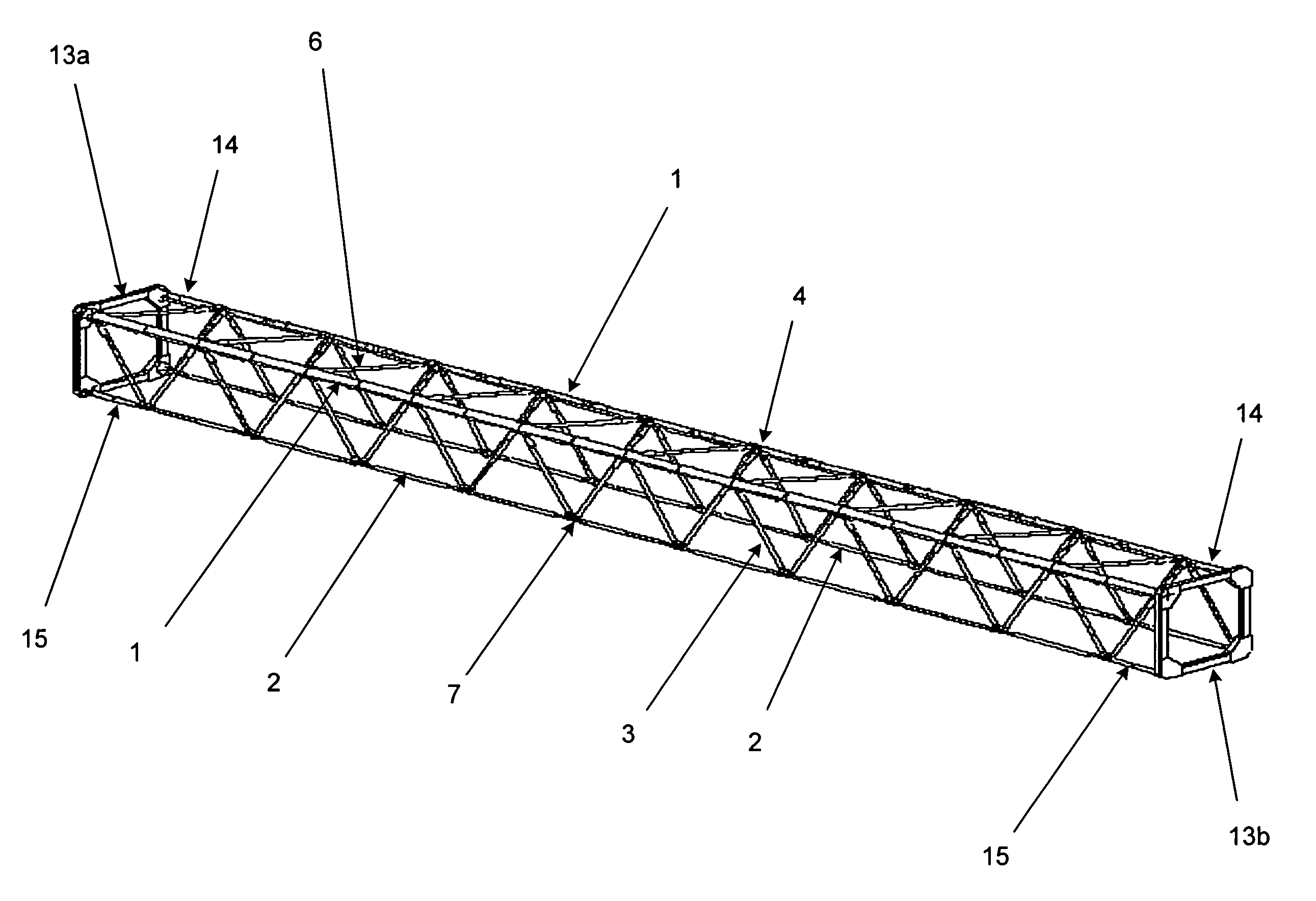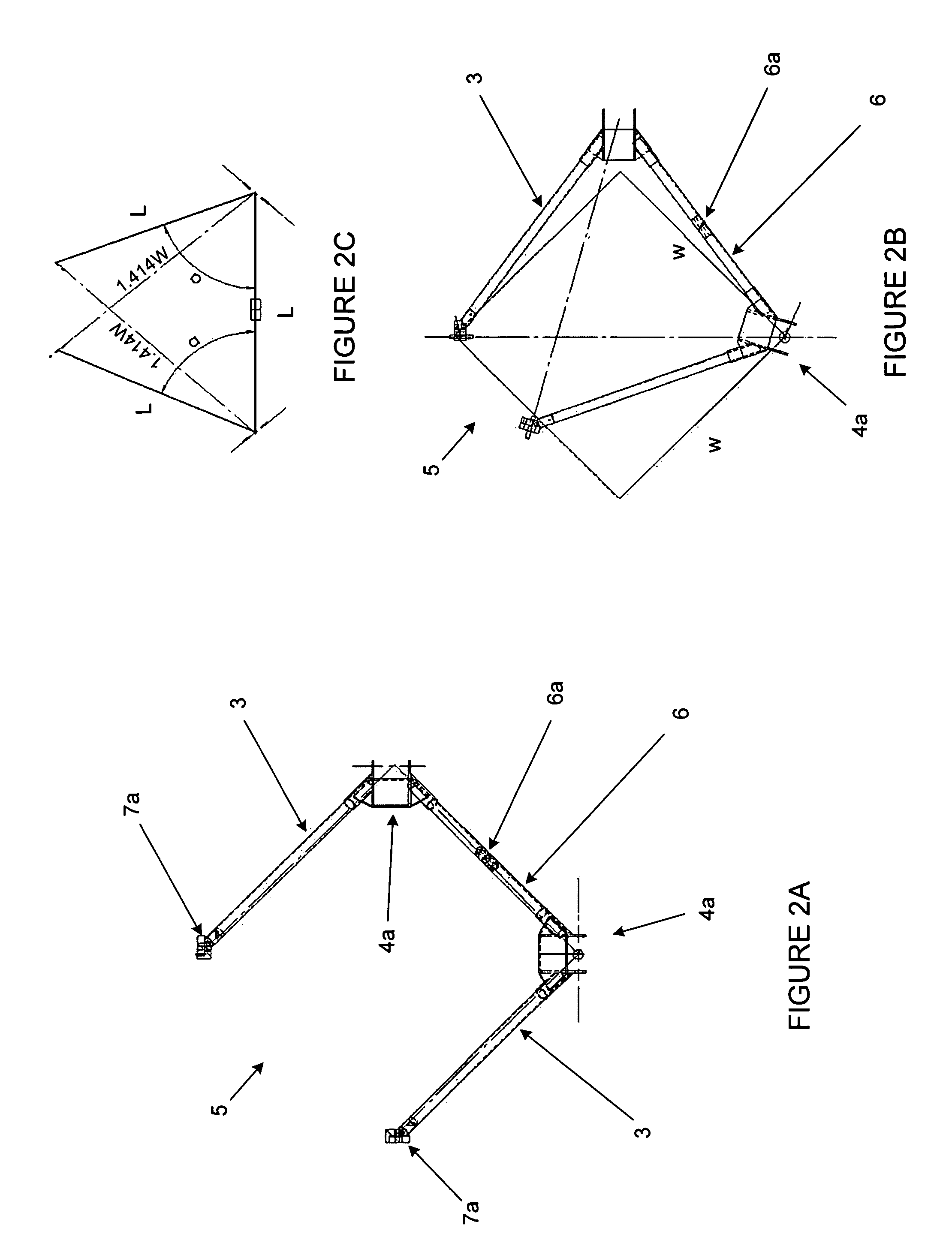Deployable truss beam with orthogonally-hinged folding diagonals
a technology of orthogonal bending and truss beams, applied in the field of deployable truss beams, can solve the problems of high cost, high complexity, high cost, etc., and achieve the effect of greater stability
- Summary
- Abstract
- Description
- Claims
- Application Information
AI Technical Summary
Benefits of technology
Problems solved by technology
Method used
Image
Examples
Embodiment Construction
[0018]FIGS. 1A and 1B show the general configuration of a deployable single-section truss beam in the in the retracted and extended (deployed) states. Four longitudinal truss chords are formed by primary 1, and secondary 2 chordal members. As depicted in FIGS. 1A and 1B, the primary chordal members 1 are compression structures and the secondary chordal members 2 are tension structures, although the chordal members are not limited to this configuration. Compression chordal members may be rigid or hinged 1, while tension chordal members may be flexible, hinged or cables 2.
[0019]The primary chords 1 are laterally connected by base diagonal members 6. Each secondary chord 2 is laterally connected with the proximal primary chord 1 by side diagonal members 3. When deployed, as shown in FIG. 1A, the structure is equivalent to three planar trusses of Warren pattern with two common chords.
[0020]Primary orthogonal hinge joints 4 connect the ends of the primary chordal members that form the pr...
PUM
 Login to View More
Login to View More Abstract
Description
Claims
Application Information
 Login to View More
Login to View More - R&D
- Intellectual Property
- Life Sciences
- Materials
- Tech Scout
- Unparalleled Data Quality
- Higher Quality Content
- 60% Fewer Hallucinations
Browse by: Latest US Patents, China's latest patents, Technical Efficacy Thesaurus, Application Domain, Technology Topic, Popular Technical Reports.
© 2025 PatSnap. All rights reserved.Legal|Privacy policy|Modern Slavery Act Transparency Statement|Sitemap|About US| Contact US: help@patsnap.com



